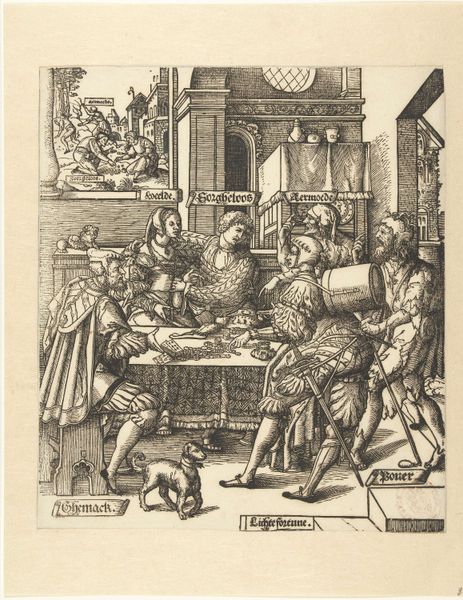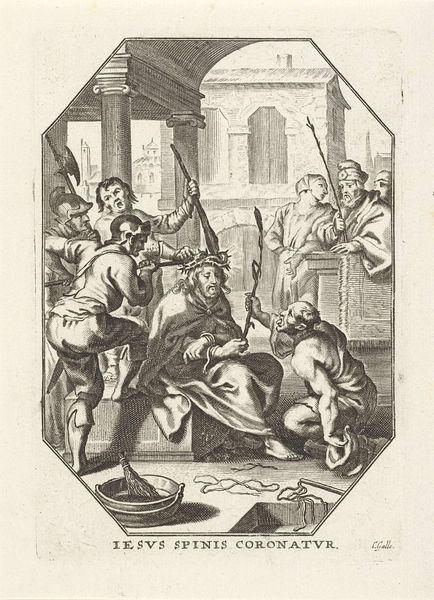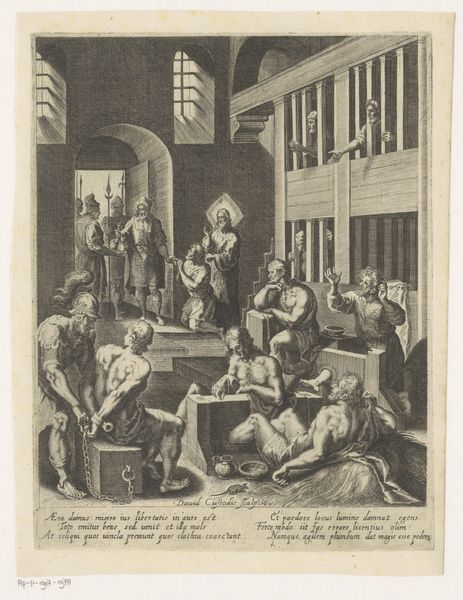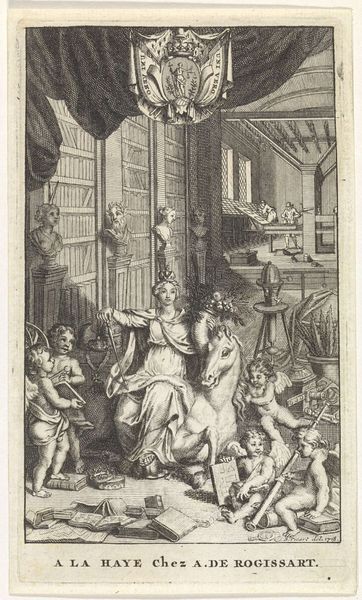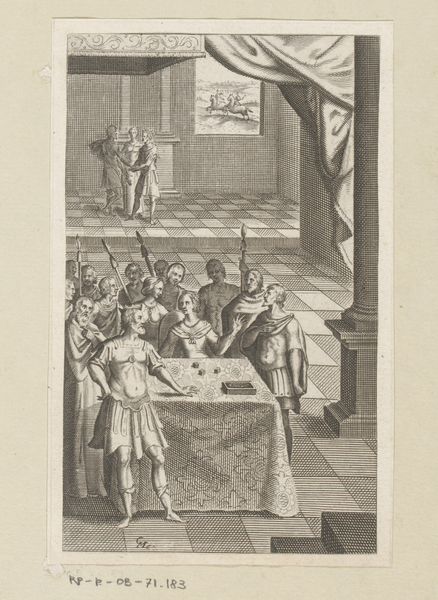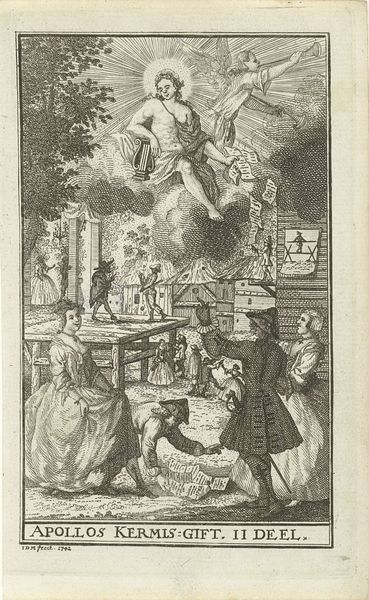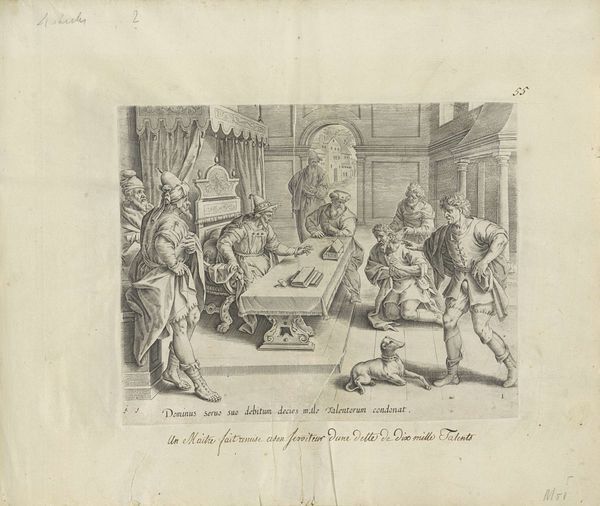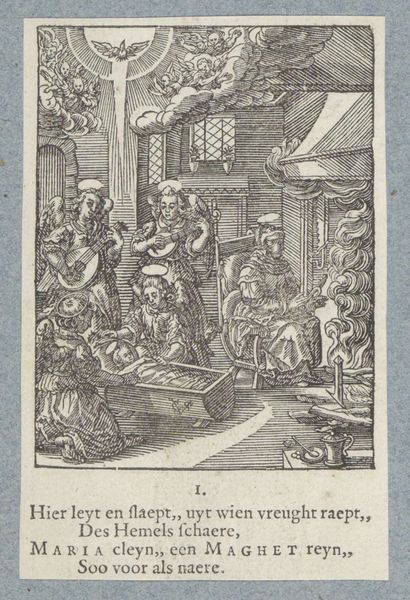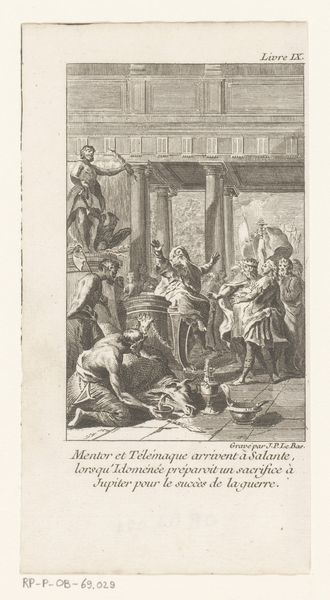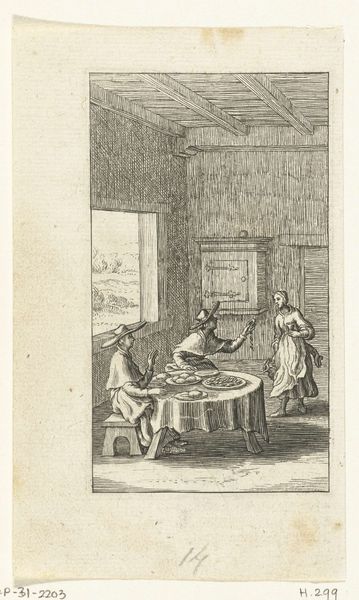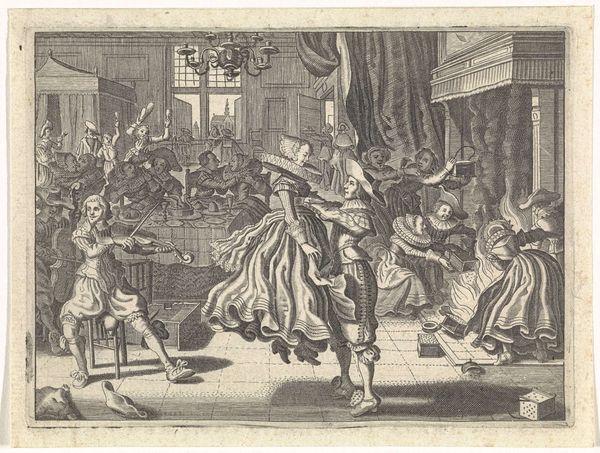
print, engraving
#
narrative-art
#
dutch-golden-age
# print
#
figuration
#
line
#
genre-painting
#
engraving
Dimensions: height 113 mm, width 65 mm
Copyright: Rijks Museum: Open Domain
Curator: Today we are looking at "Duyfken en Willemynken voor de magistraat," an engraving attributed to Boëtius Adamsz. Bolswert, dating from about 1590 to 1638. It's currently held at the Rijksmuseum. Editor: What strikes me immediately is the duality; order and chaos existing in the same plane. The stern magistrates sit at their table while utter mayhem unfolds behind them! Curator: Precisely! The division of space offers us a clear perspective on civic duty and social upheaval in Dutch society during that time. Engravings like these often circulated as commentary on societal issues. Note the style—pure line work defining form. Editor: Visually, the figures enacting chaos are distorted, almost possessed, moving counter to the gravity and grounded authority of the men in the foreground. Those instruments they carry… what are they playing? Is this revelry, a riot, or something else entirely? Curator: The instrumentation could very well signify a sort of disruption of societal harmony. Iconographically, you're quite right to focus on the symbols: those rods carried by some, along with the actions they symbolize revolt or some disruption to local order that calls for arbitration and judgement. Perhaps drunkenness? Public disturbance? It calls upon those in power, symbolized by those calmly seated and deliberating. Editor: It is a scene laden with tension. The magistrates represent governance, perhaps, law and order. Is there a connection between the central authority's reaction or rather lack of reaction to the bedlam transpiring just outside of that space and Dutch values or commentary about social reform. What point might Bolswert make by holding that scene separate? Curator: This image speaks to tensions within communities between behaviors condoned and behaviours deemed worthy of a formal reprimand and this visual tension and balance could speak directly to values of reform; this type of image could speak loudly in popular opinion about who deserves a harsh punishment. And how should punishment balance personal agency against impact upon society at large. Editor: Indeed. Its commentary certainly invites viewers to examine the meaning of maintaining order amidst the frenzy of human passion. Thank you for such clear exposition of the interplay and narrative. Curator: My pleasure. It’s a rich depiction of a community wrestling with how it can and should govern itself.
Comments
No comments
Be the first to comment and join the conversation on the ultimate creative platform.
